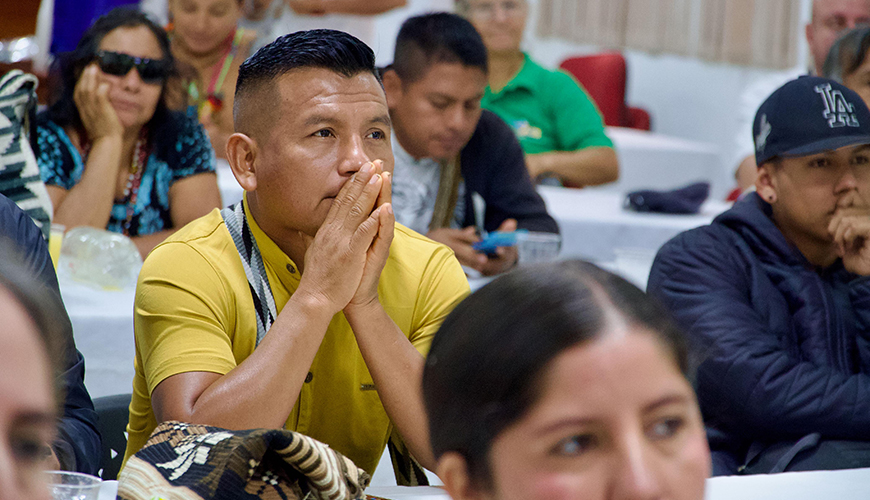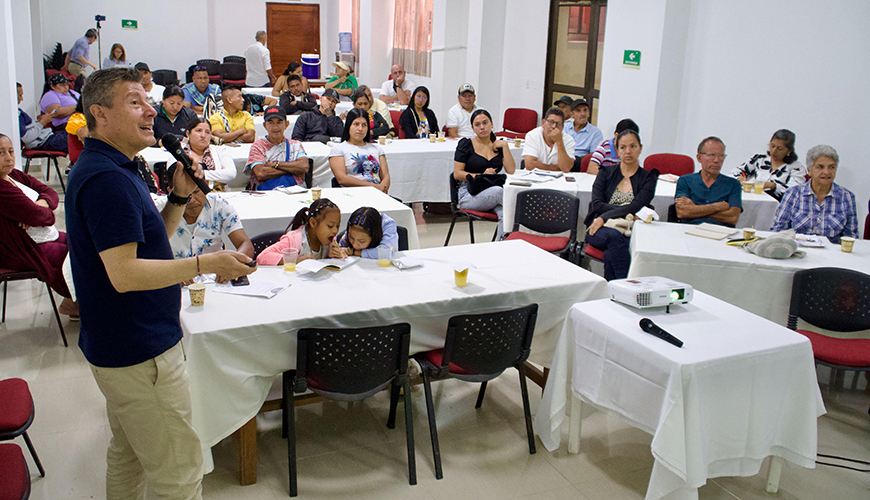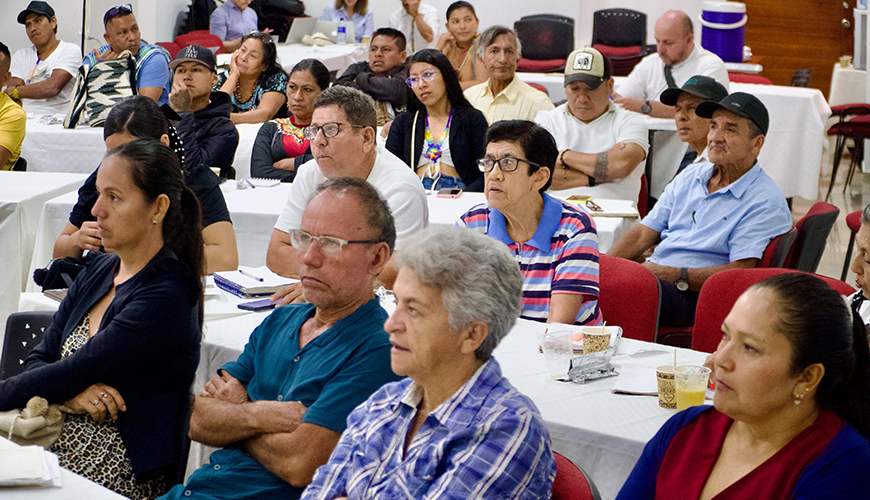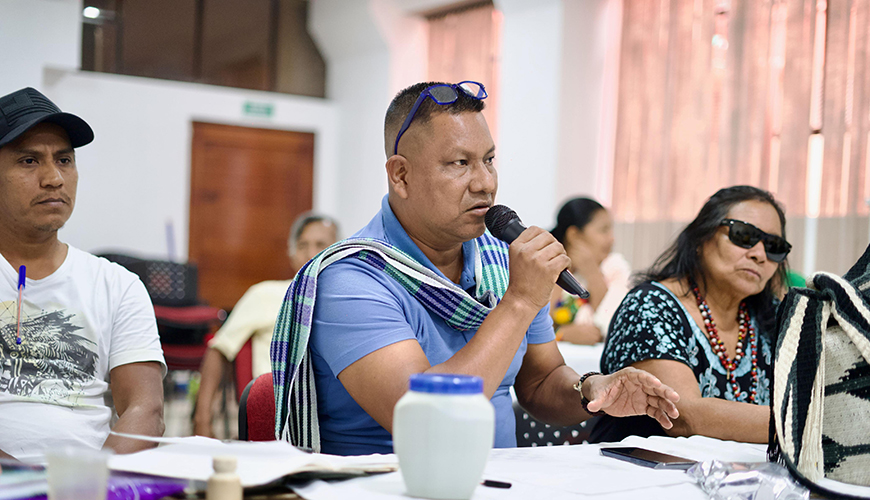During the month of March, Caquetá and Putumayo were the scene of the first pedagogical cycle of the Initiative. Religious leaders and leaders from different sectors of society acquired the basic conceptual tools to work together for the protection of the Amazon forests. We tell you all about this new training process.
Read the complete edition of EL BOSQUE ES VIDA magazine (in Spanish).
Political advocacy, as an effective tool for the protection of the Amazon, was the central theme of the first training cycle of 2025, carried out by the Interreligious Initiative for Tropical Forests in the departments of Caquetá and Putumayo last March.
San Vicente del Caguán (March 12), Cartagena del Chairá (March 13) and Curillo (March 14), in Caquetá; and Puerto Guzmán (March 27), Orito (March 28) and Puerto Asís (March 29), in Putumayo, were the setting for these pedagogical meetings, which respond to the Initiative’s capacity development strategy.
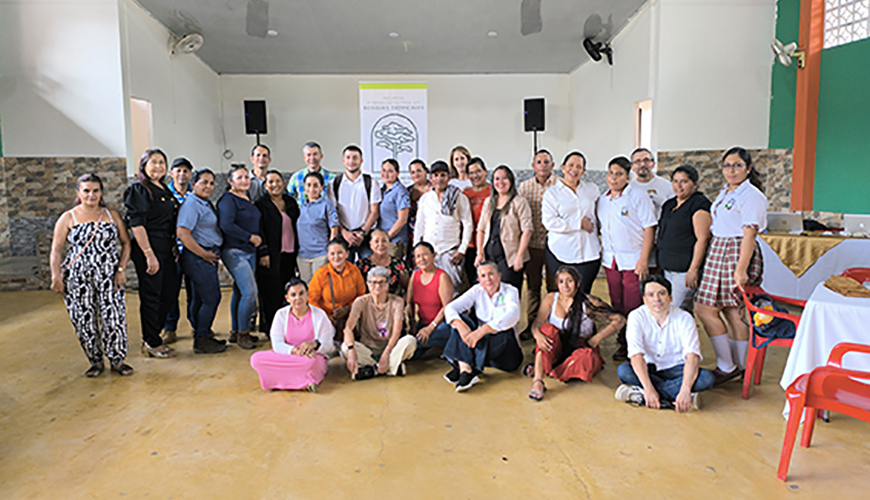
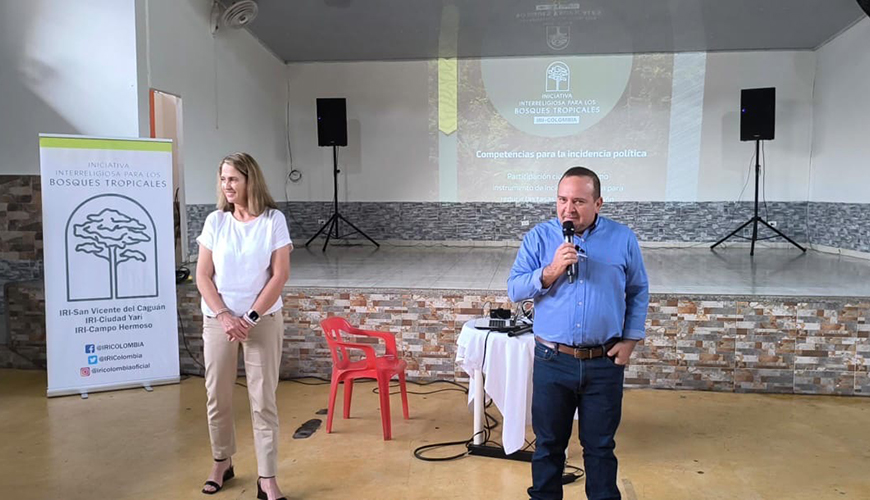 "We want all the actors of the municipality to align ourselves with conservation. Livestock has a strong impact on deforestation; For this reason, we want to give it an environmental approach. We must build the action plan and that is where we all have to participate," César Monje, Secretary of Government of San Vicente del Caguán.
"We want all the actors of the municipality to align ourselves with conservation. Livestock has a strong impact on deforestation; For this reason, we want to give it an environmental approach. We must build the action plan and that is where we all have to participate," César Monje, Secretary of Government of San Vicente del Caguán.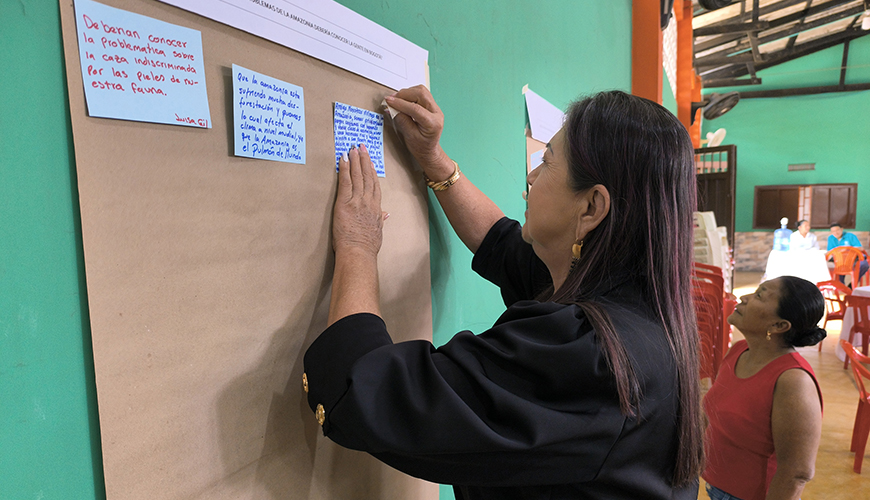 IRI members in San Vicente del Caguán made proposals for the "No Forests, No Future" campaign.
IRI members in San Vicente del Caguán made proposals for the "No Forests, No Future" campaign.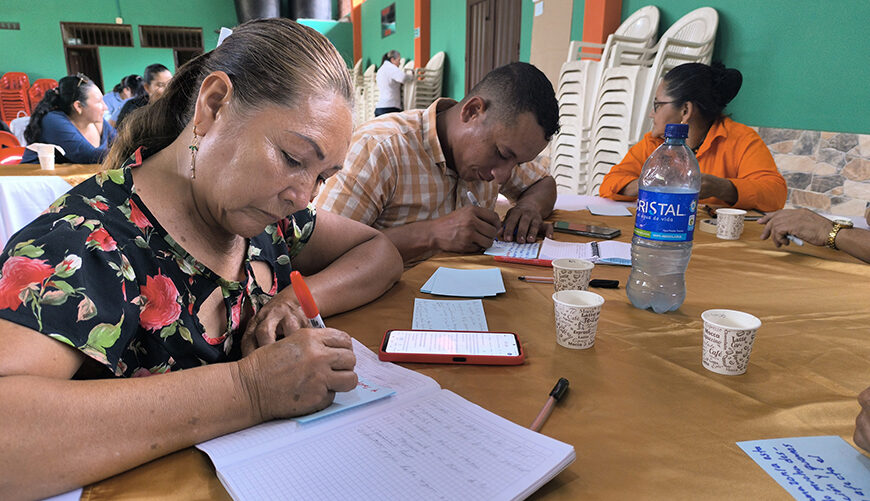
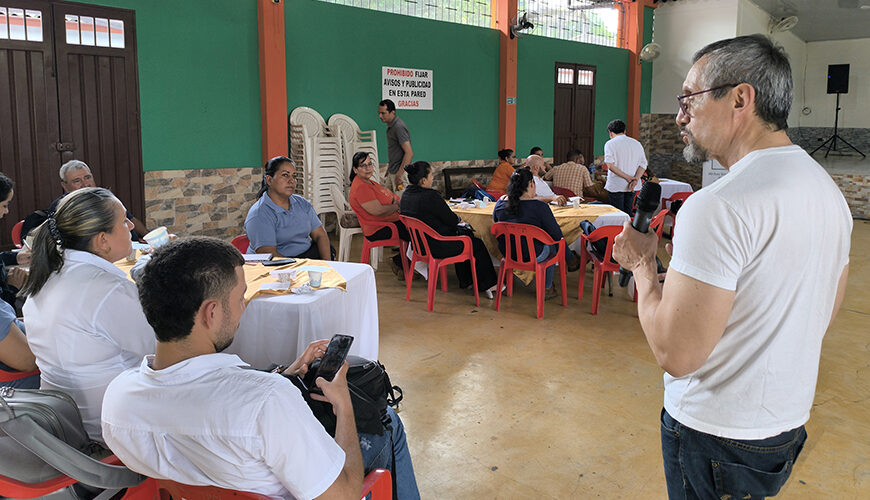
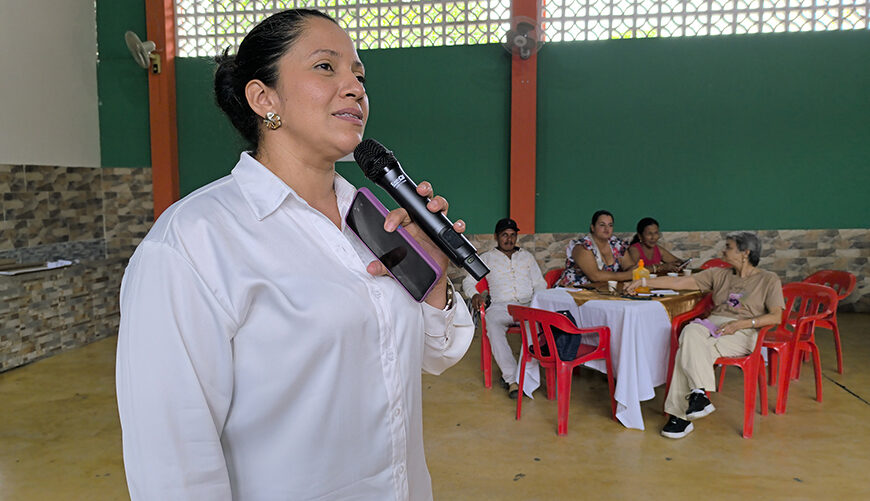 "Our common interest is the protection of the environment, specifically the Amazon forests. It will be easier to do it if we work in an articulated way than if we do it personally," Pastor Julieth Quevedo, coordinator of the local chapters in San Vicente del Caguán.
"Our common interest is the protection of the environment, specifically the Amazon forests. It will be easier to do it if we work in an articulated way than if we do it personally," Pastor Julieth Quevedo, coordinator of the local chapters in San Vicente del Caguán.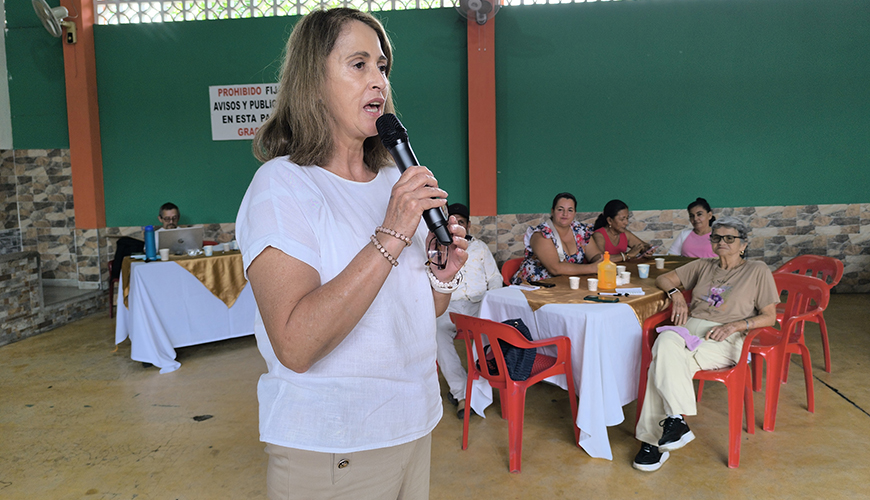
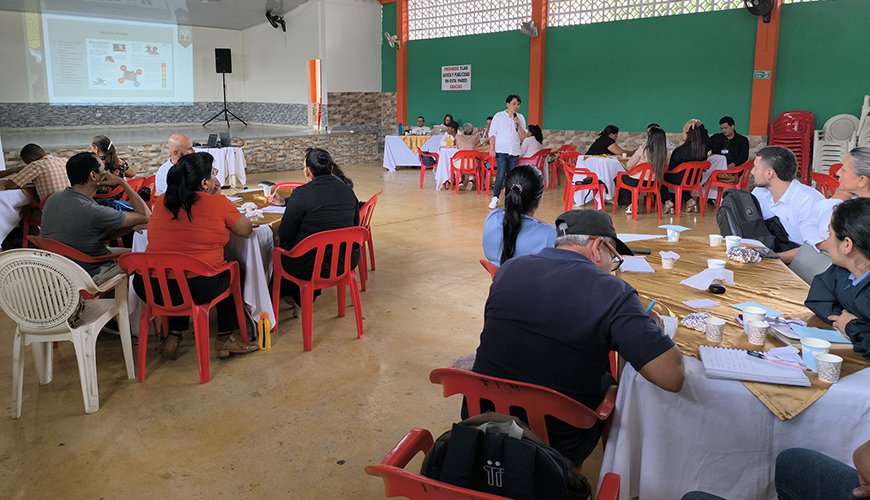 The process of formation of the chapters in San Vicente del Caguán was carried out in the Parish Theater.
The process of formation of the chapters in San Vicente del Caguán was carried out in the Parish Theater.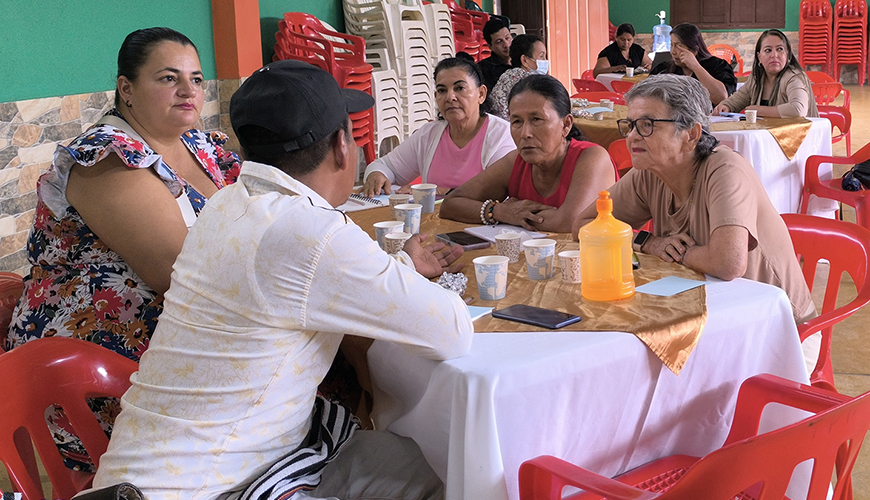 St. Vincent's leaders participated in a hands-on advocacy exercise.
St. Vincent's leaders participated in a hands-on advocacy exercise.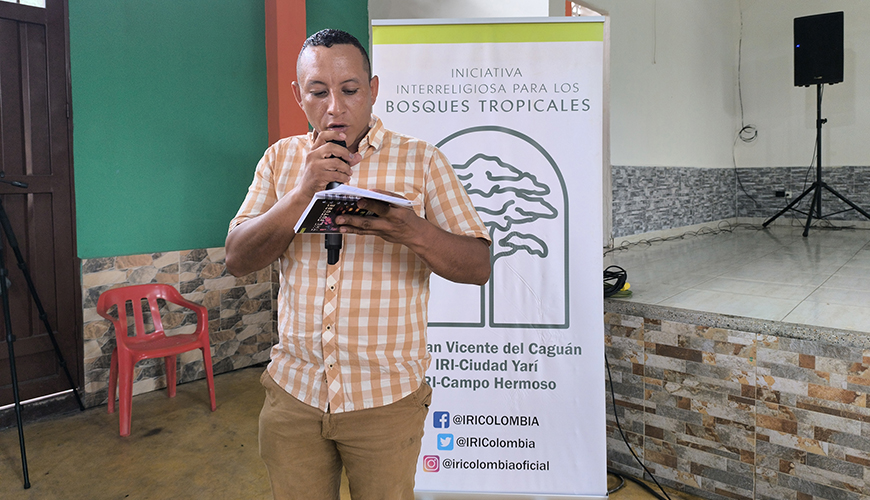
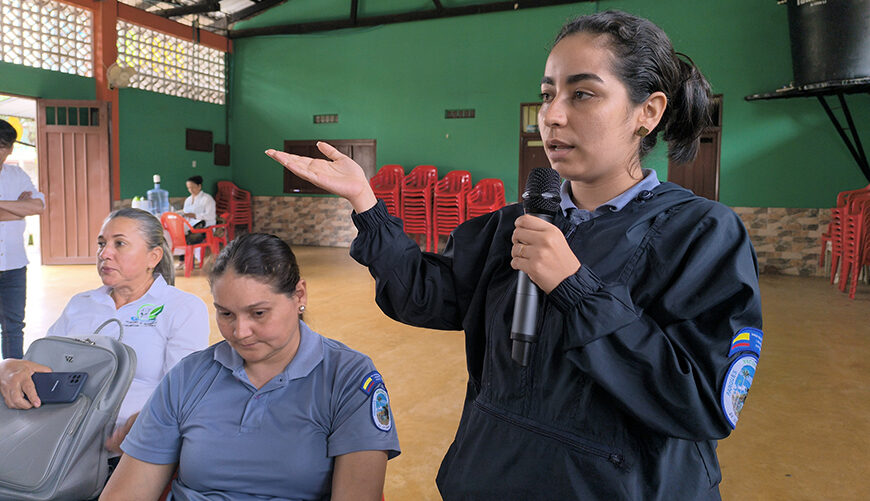 The training process in San Vicente del Caguán was attended by representatives of National Parks.
The training process in San Vicente del Caguán was attended by representatives of National Parks.
“With the loss of the Amazon forest we lose the possibility of breathing fresh air. Deforestation and forest fires are killing people. We already saw it during the pandemic. The planet and God are showing us signs and we do not pay attention to them. We are not acting to face this climate tragedy,” said Pastor Julieth Quevedo, during the opening of the formation process in San Vicente del Caguán. This was the first of the six days, aimed at the members of the local chapters of the Initiative in San Vicente del Caguán, Ciudad Yarí and Campo Hermoso; Cartagena del Chairá, La Primavera and Remolinos del Caguán; Curillo, Núcleo Horizonte and Mayoyoque, all of them in Caquetá. As well as the members of the chapters in Puerto Guzmán, Santa Lucía and Nueva Unión; Orito, Siberia and Churuyaco; and Puerto Asís, Piñuña Blanco and El Águila, in Putumayo.
“From 2020 to 2023, 20% of the forest cover of San Vicente del Caguán has disappeared, which is a very significant loss not only for the department but for the nation. If measures are not taken to reduce these rates, in a decade we will have lost half of the forests in the municipality,” said environmental engineer Carlos Alejandro Cubides, who led the political advocacy workshop in the training processes in San Vicente del Caguán, Cartagena del Chairá and Curillo.
During the pedagogical days in Caquetá and Putumayo, more than 250 leaders, members of the local chapters of IRI-Colombia in these departments, acquired the basic conceptual tools to develop advocacy processes. Among them, they learned about the main elements of political advocacy, types of advocacy, and the phases to formulate and implement an advocacy process that contributes to the protection of Amazonian tropical forests and the control of deforestation.
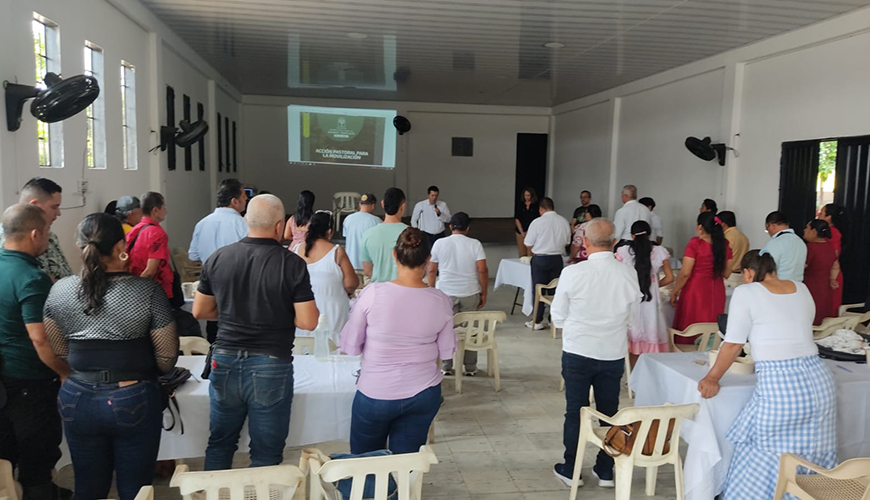 45 leaders participated in the formation process in Cartagena del Chairá.
45 leaders participated in the formation process in Cartagena del Chairá.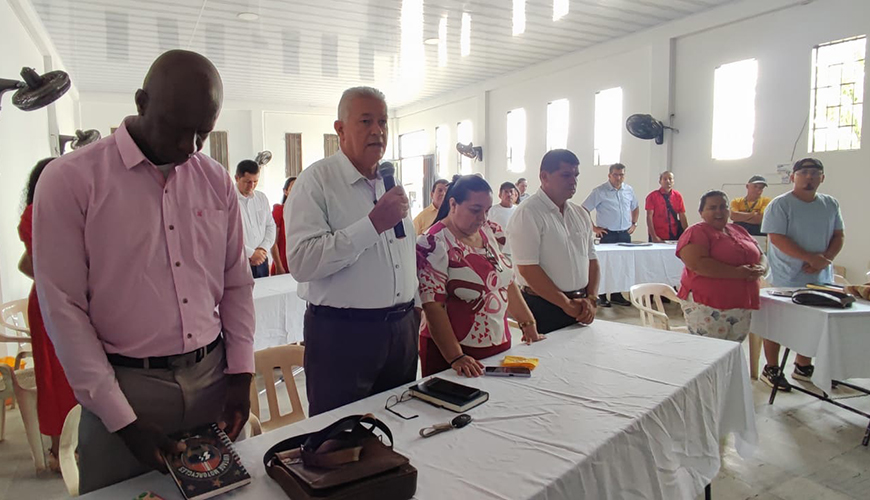 The Cartagena del Chairá Hall hosted the members of the IRI chapters in this municipality.
The Cartagena del Chairá Hall hosted the members of the IRI chapters in this municipality.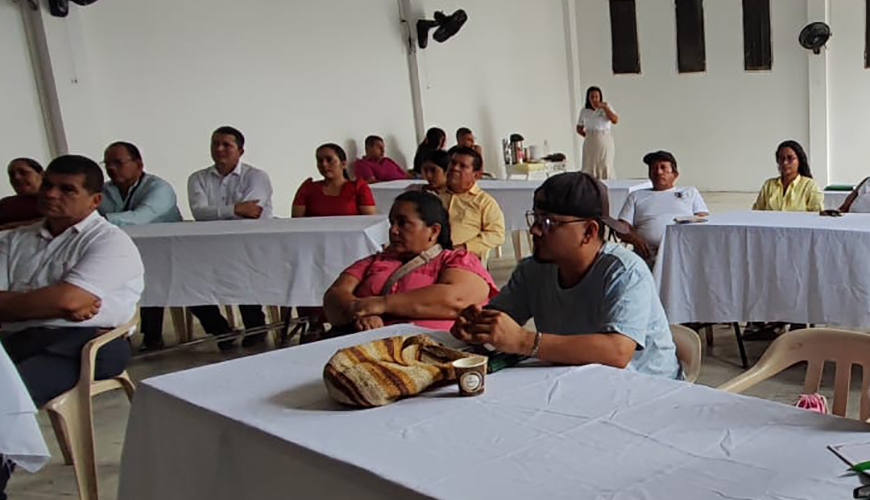
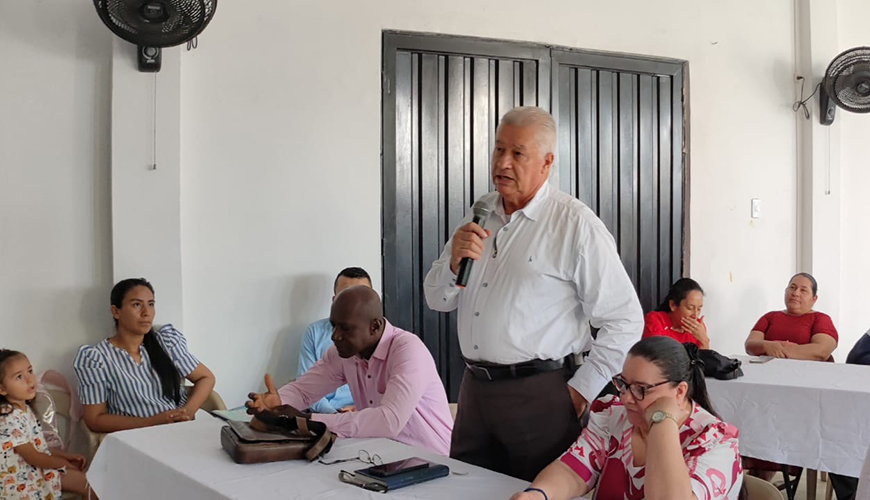
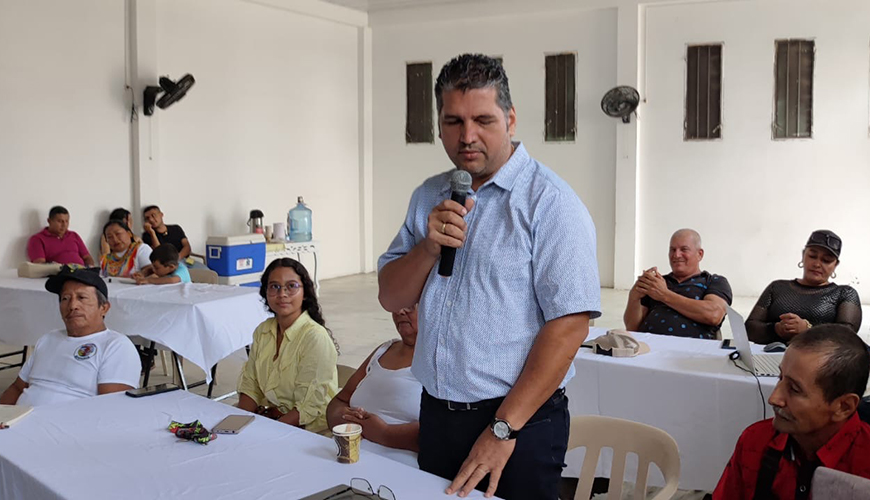
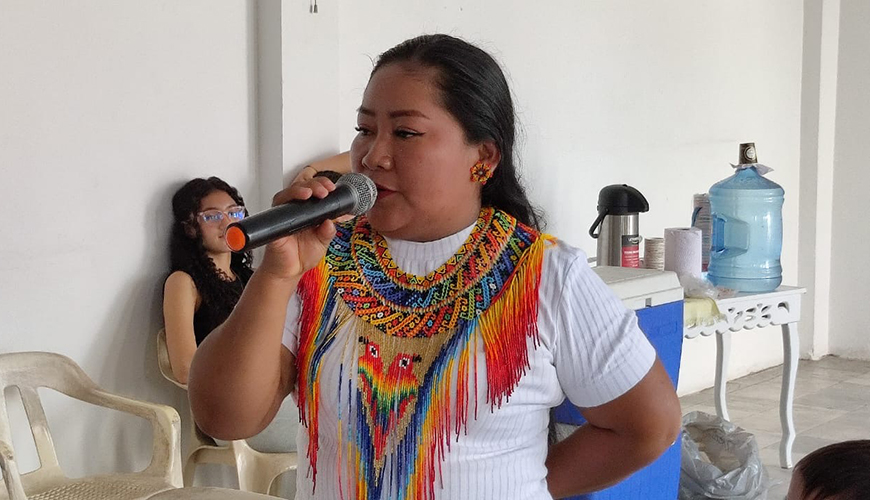
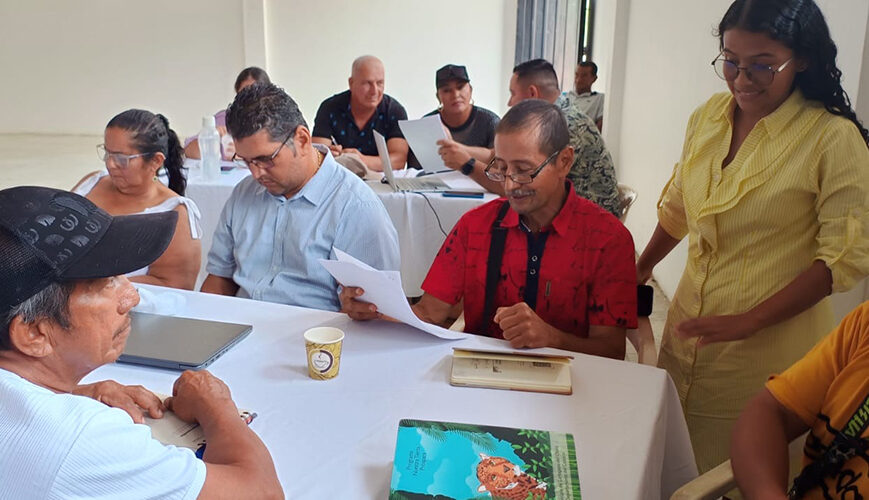 Those attending the process in Cartagena del Chairá formulated proposals for advocacy processes in their municipality.
Those attending the process in Cartagena del Chairá formulated proposals for advocacy processes in their municipality.
Together, the impact is greater
“Although most of the time we believe that democracy works only at the ballot box, around elections, citizen participation must be permanent. We must exercise democracy every day and we can do it through political advocacy,” explained José Adolfo Castañeda, who led the advocacy workshop in the training processes in Putumayo.
The academic, Ph.D. in Political Studies and International Relations, referred to the close relationship between citizen participation and political advocacy and how the latter constitutes a way to exercise democracy and generate changes in public policies in favor of the protection of the Amazonian tropical forests.
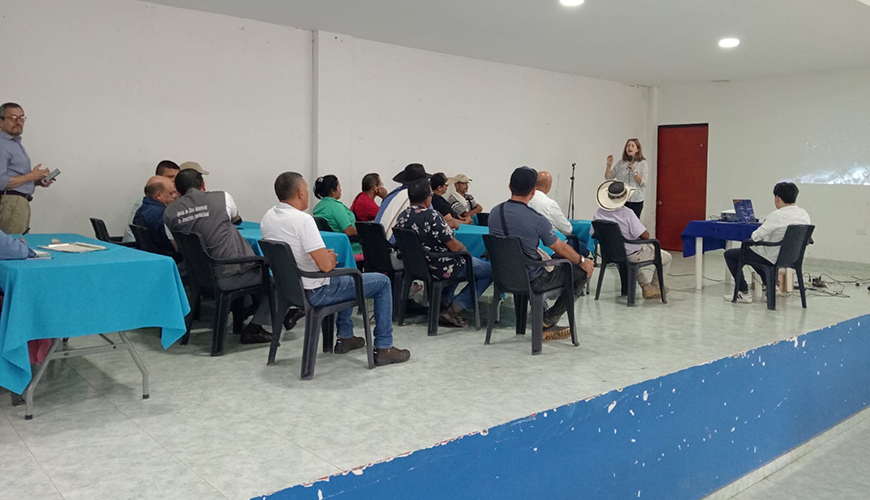 The training process of IRI-Curillo, IRI-Núcleo Horizonte and IRI-Mayoyoque was held in the Francisco Javier Rivera municipal auditorium.
The training process of IRI-Curillo, IRI-Núcleo Horizonte and IRI-Mayoyoque was held in the Francisco Javier Rivera municipal auditorium.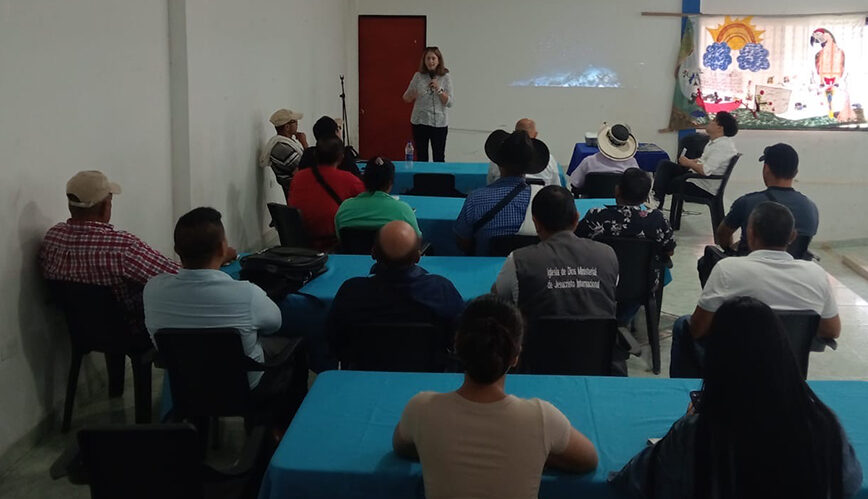 The formation process in Curillo brought together 35 religious, social and political leaders of the municipality.
The formation process in Curillo brought together 35 religious, social and political leaders of the municipality.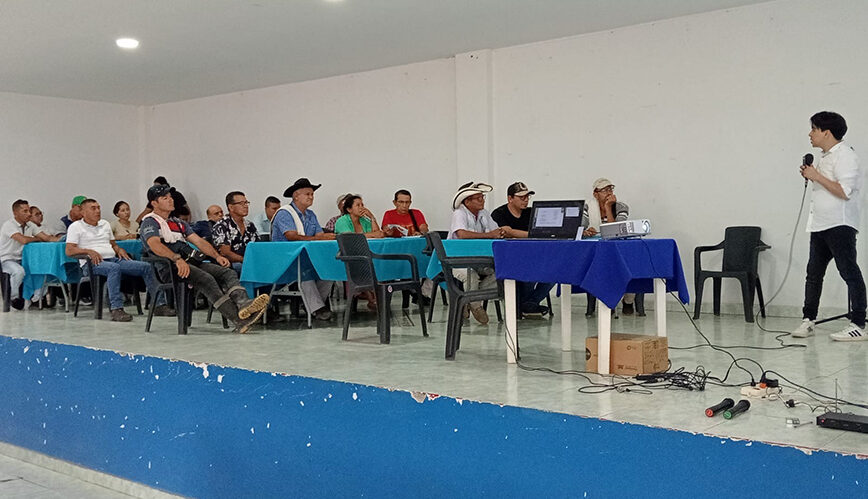
Citizen participation has two ways of action, one of monitoring and control of the programs and projects that are being executed and another during planning. According to the expert, participating in the first guarantees that the second is linked to the benefits of the municipality and not to private interests. “Some people believe that doing an exercise of control is opposition, but it is the opposite. It is the possibility of linking ourselves to the processes, because it forces us to know the budgets of our municipality, how the programs are implemented and if they are working. It is a way of guaranteeing that they are being fulfilled and prepares us so that when the next territorial development plan is designed, we know how it works,” adds the academic, who also has a Ph.D. in Political and Social Sciences.
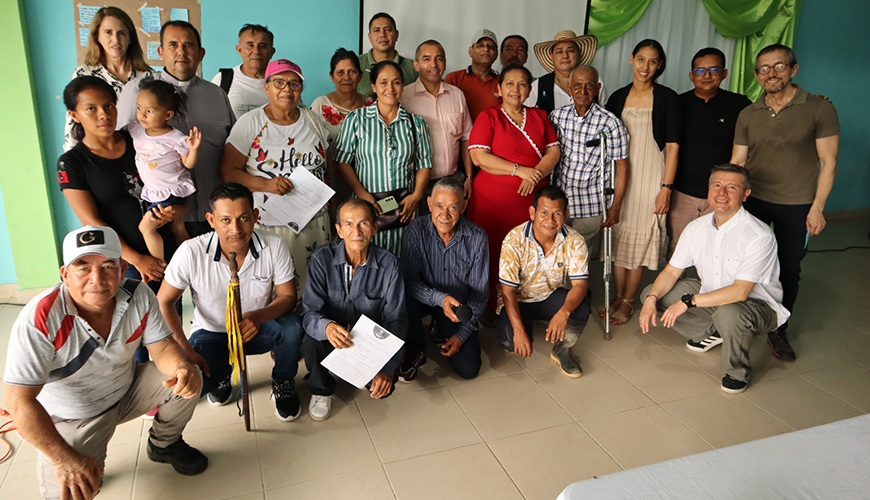
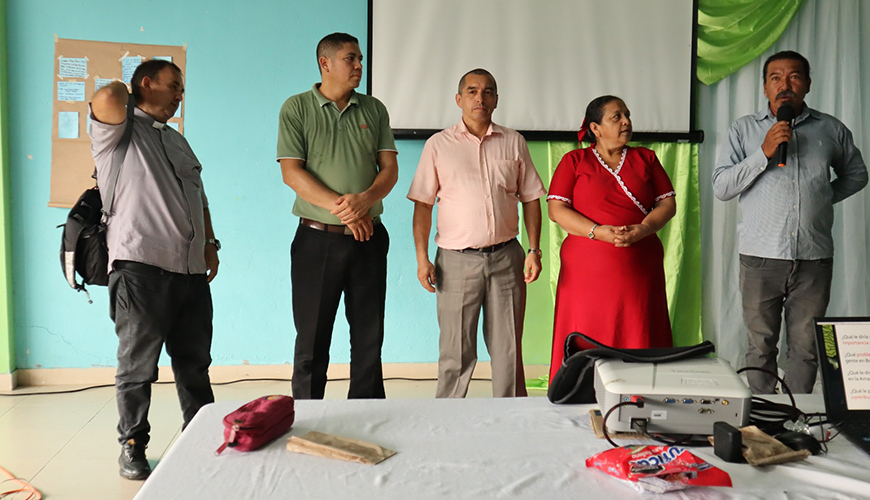 Religious leaders of Puerto Guzmán.
Religious leaders of Puerto Guzmán.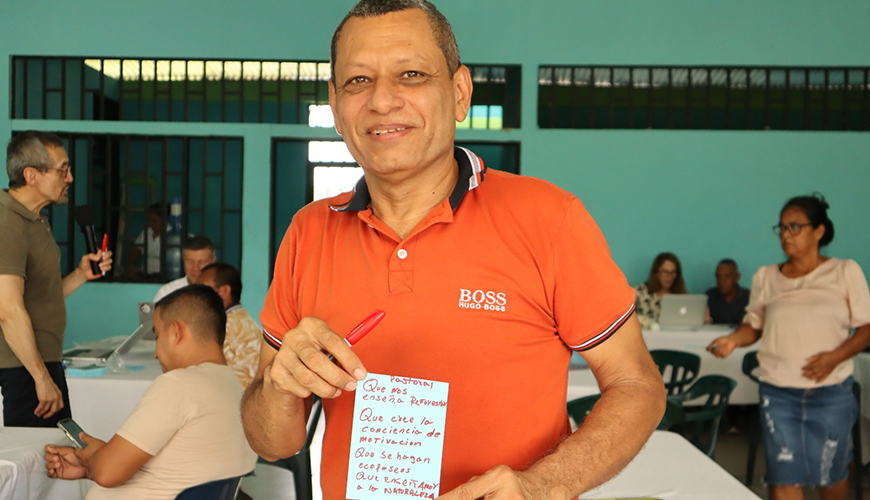
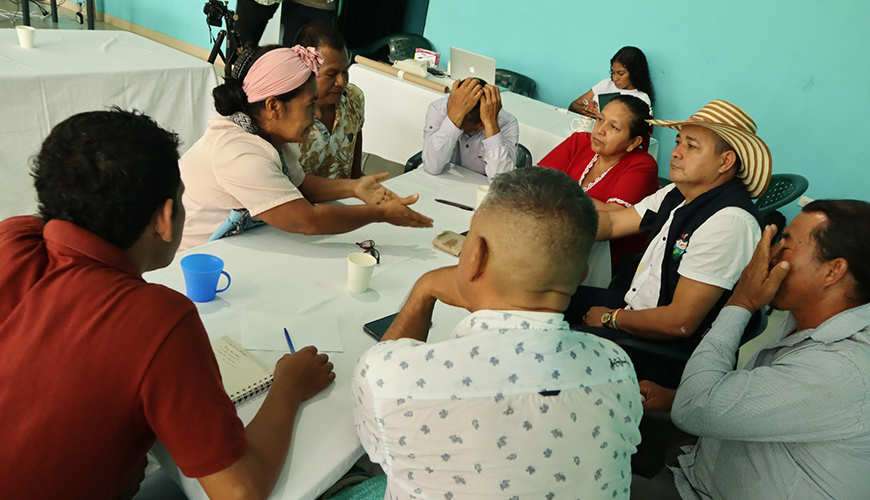 During the practical exercise for the formulation of advocacy processes.
During the practical exercise for the formulation of advocacy processes.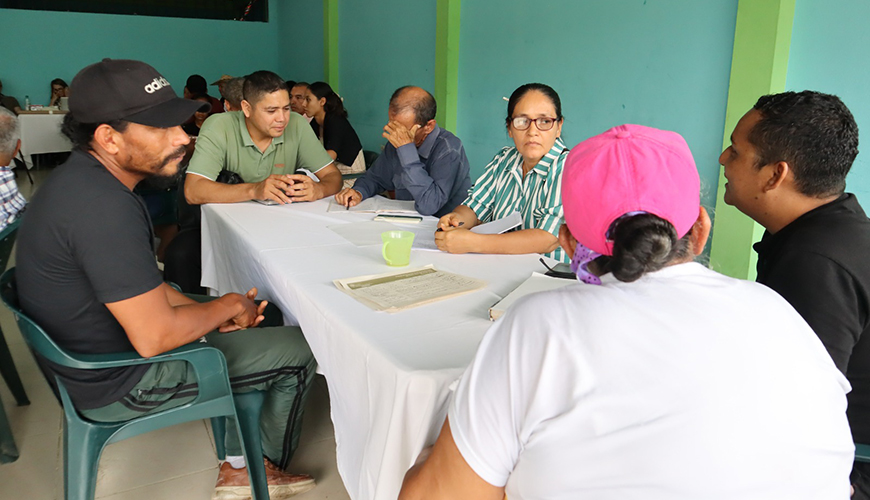 During the practical exercise for the formulation of advocacy processes.
During the practical exercise for the formulation of advocacy processes.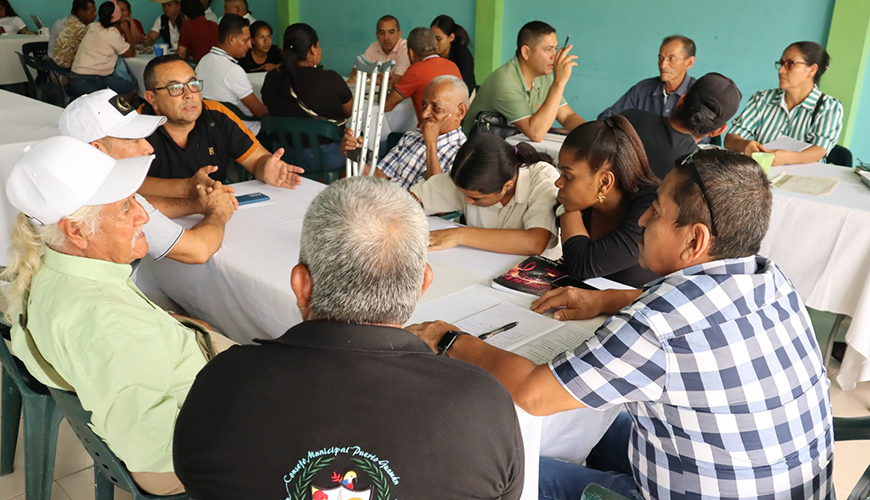 During the practical exercise for the formulation of advocacy processes.
During the practical exercise for the formulation of advocacy processes.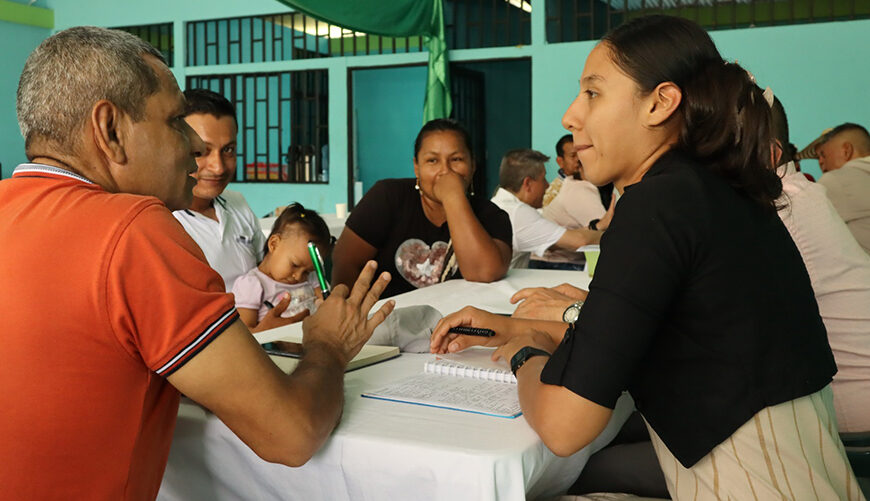 During the practical exercise for the formulation of advocacy processes.
During the practical exercise for the formulation of advocacy processes.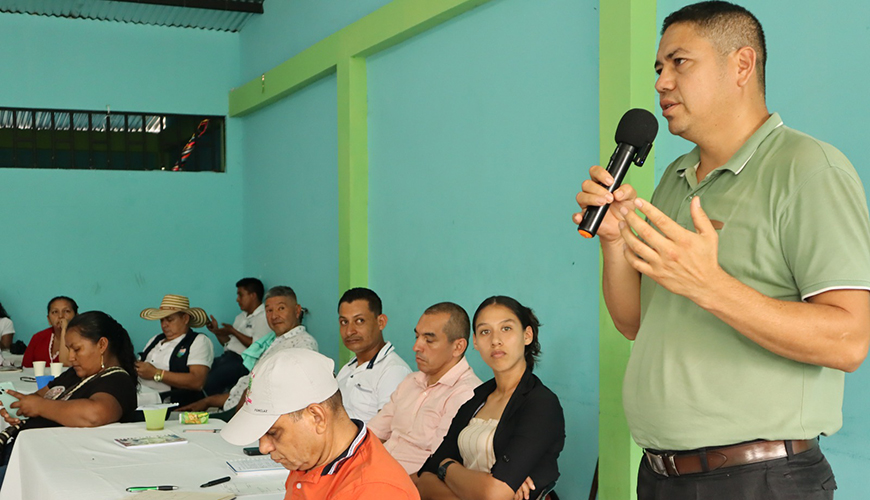
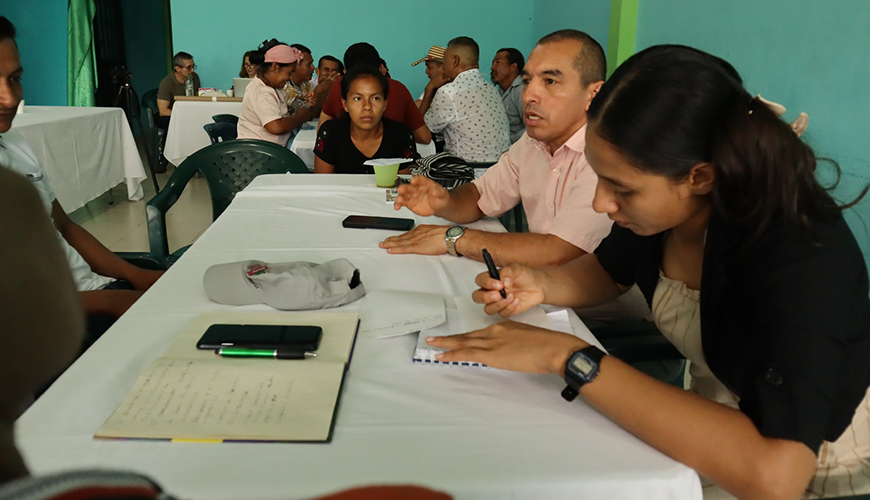
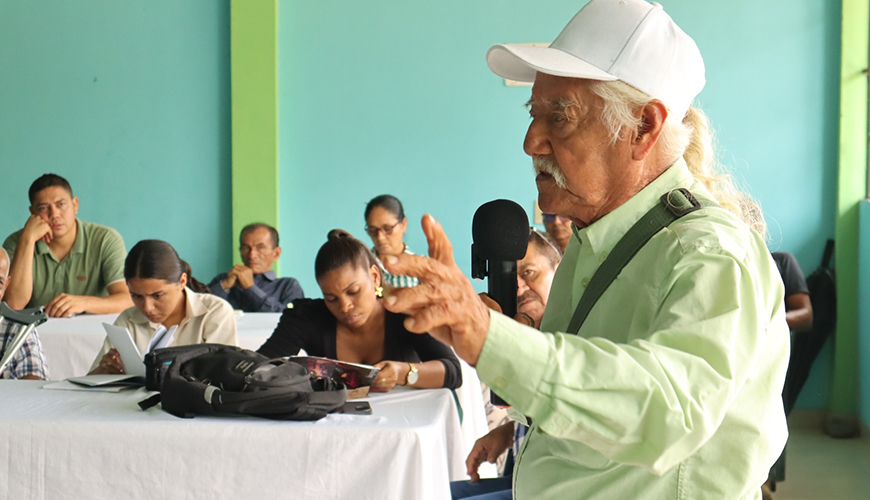
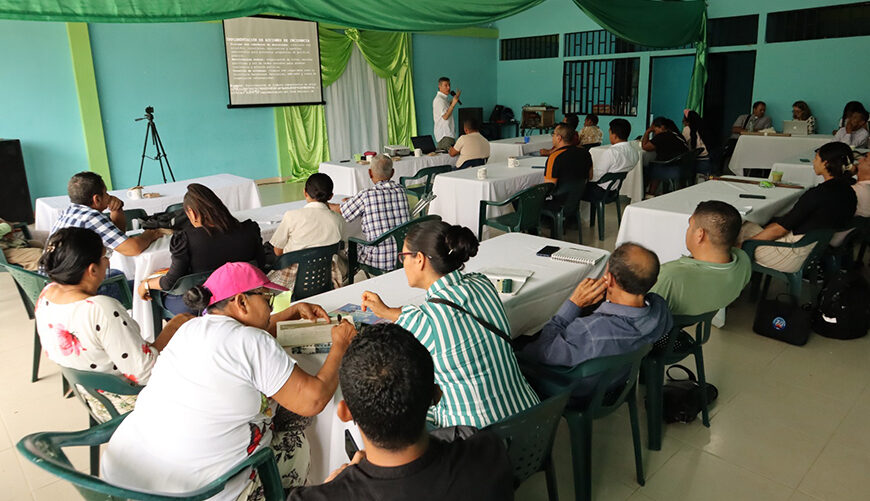 Political scientist José Adolfo Castañeda led the political advocacy workshop in Puerto Guzmán.
Political scientist José Adolfo Castañeda led the political advocacy workshop in Puerto Guzmán.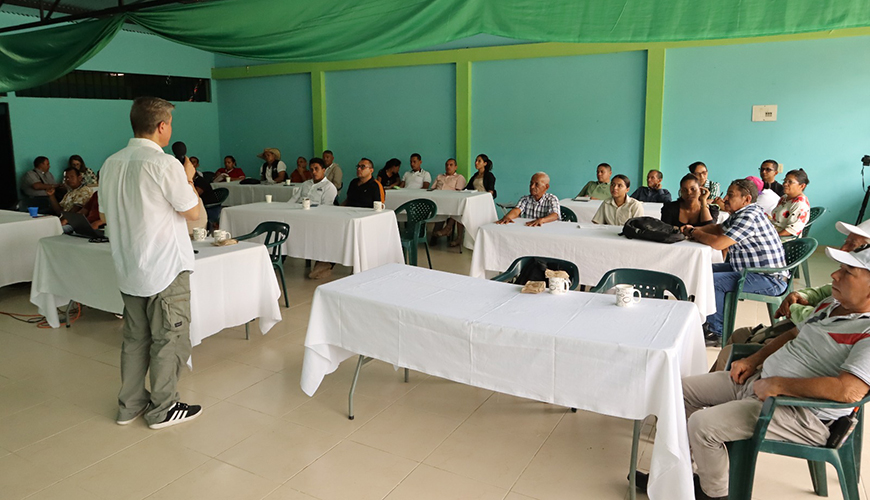 The training process in Puerto Guzmán brought together 38 religious, social and political leaders of this municipality.
The training process in Puerto Guzmán brought together 38 religious, social and political leaders of this municipality.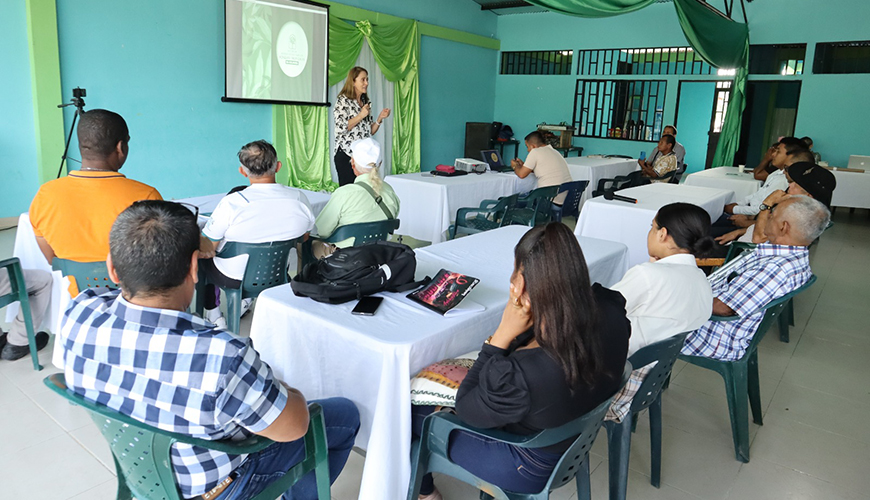
From theory to practice
“Puerto Guzmán has wonderful natural resources, above other places. However, extractivism has been causing us effects, mainly in health,” denounced the deputy to the Chamber for this municipality, Nolver Figueroa.
In addition to mining, the degradation of ecosystems as a result of deforestation, illicit crops and cattle ranching, and the contamination of water sources due to the absence of optimal sewage systems, were the main environmental problems identified by the leaders during a practical exercise of formulating political advocacy processes.
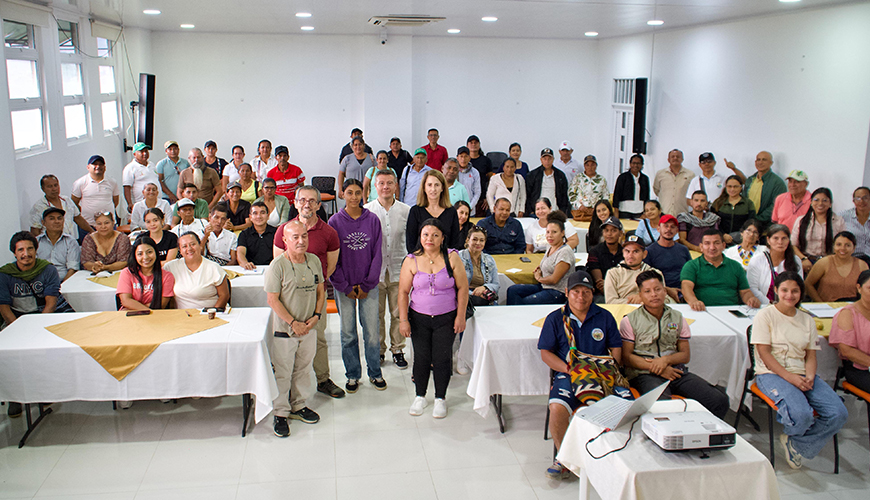 The training process in Orito took place on March 28, in the auditorium of the Chamber of Commerce.
The training process in Orito took place on March 28, in the auditorium of the Chamber of Commerce.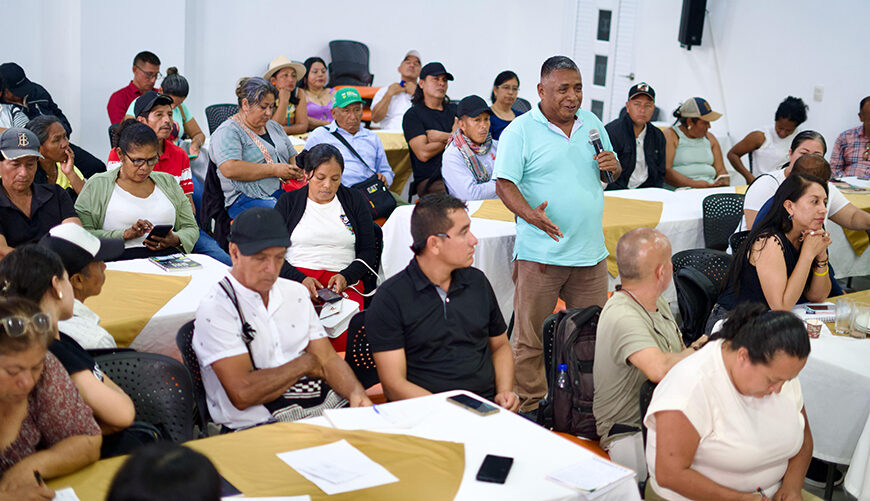
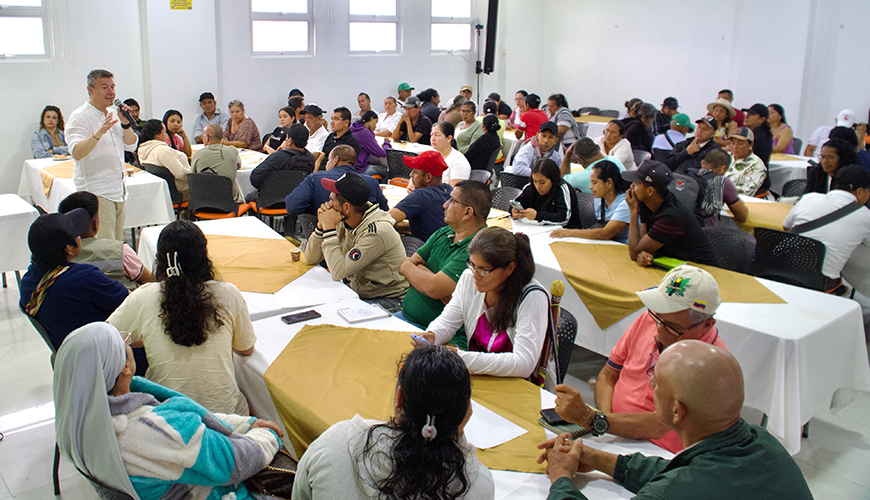 The training process in Orito brought together 95 religious, social, indigenous and political leaders from the municipality of Putumayo.
The training process in Orito brought together 95 religious, social, indigenous and political leaders from the municipality of Putumayo.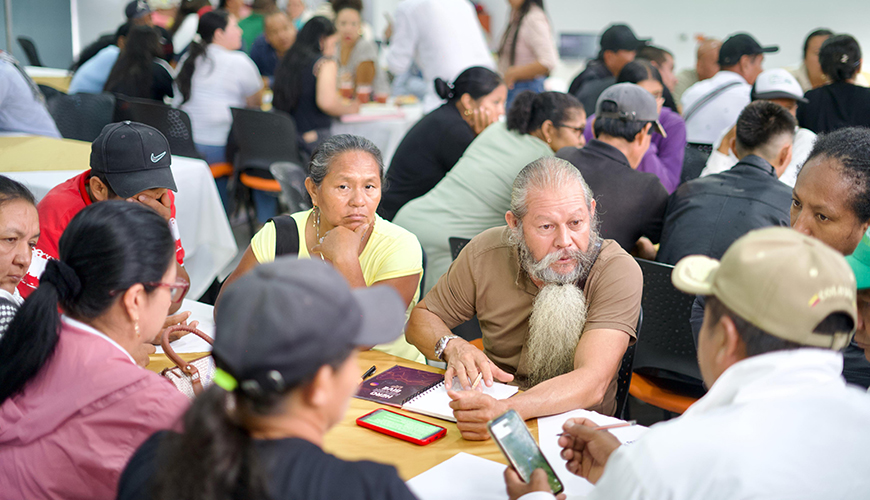
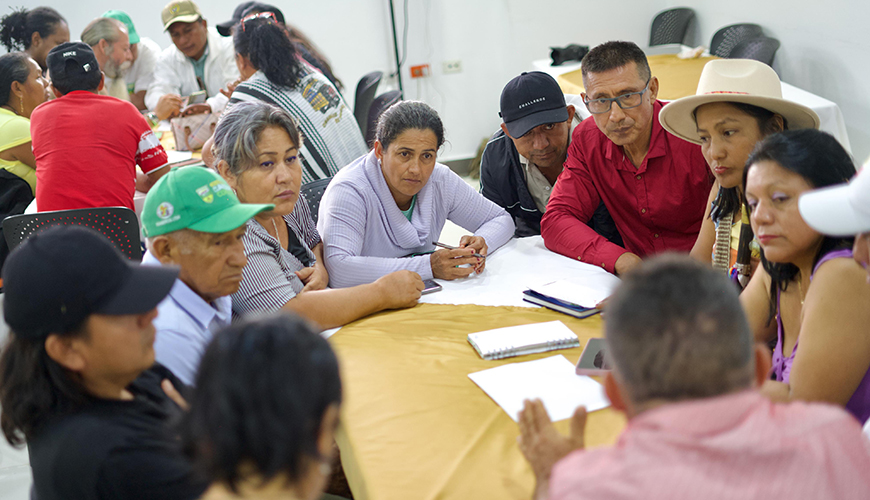
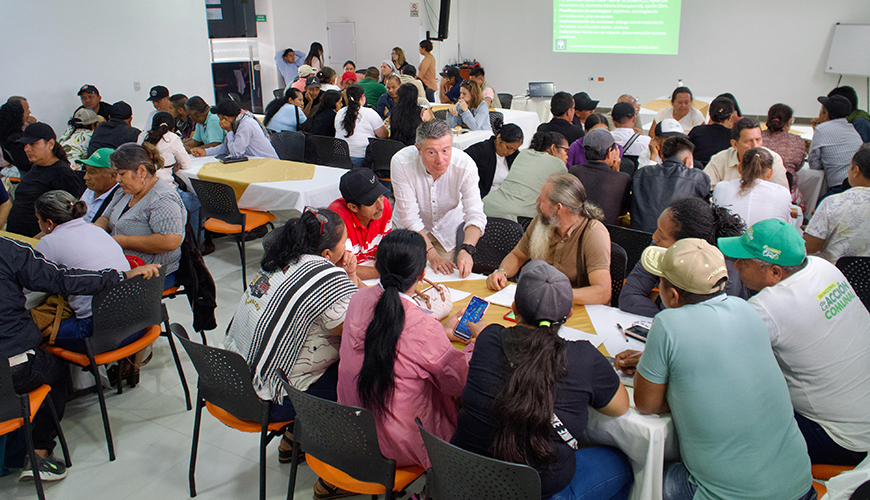 Gathered in groups, those attending the process in Orito formulated proposals for advocacy processes.
Gathered in groups, those attending the process in Orito formulated proposals for advocacy processes.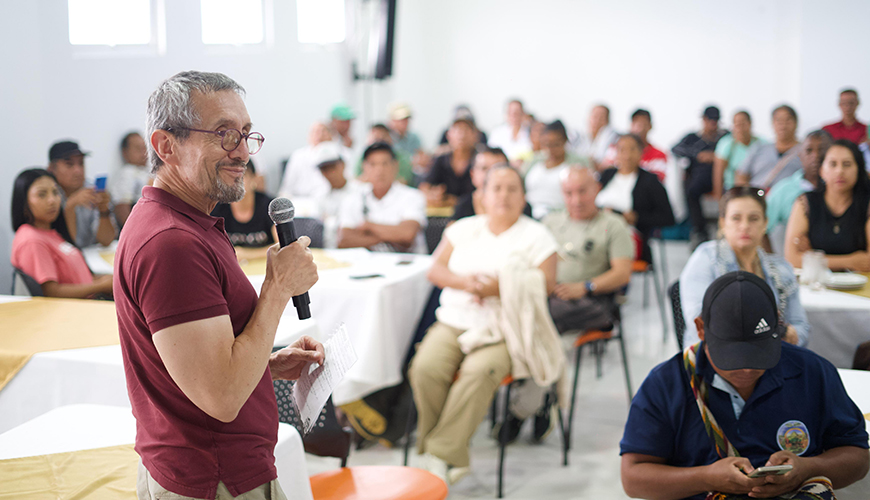
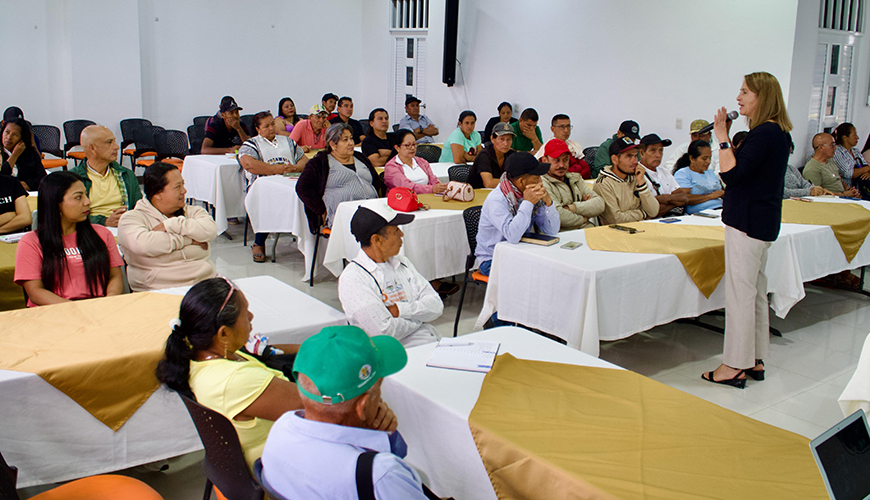 Blanca Lucía Echeverry, coordinator of IRI-Colombia, during the installation of the process in Orito.
Blanca Lucía Echeverry, coordinator of IRI-Colombia, during the installation of the process in Orito.
Awareness days in the communities, citizen mobilization and environmental education, which integrate children and young people, were some of the advocacy actions that the leaders intend to carry out to face them. In addition, they formulated action plans to carry them out and control and communications strategies.
“Teachers contribute our grain of sand from schools, raising awareness and generating simple activities aimed at the protection of mother nature, so that the child becomes more aware of the importance of taking care of the environment every day,” said the teacher of the Lusitania Educational Institution, Luz Milena Ruiz, one of the attendees. In addition to rectors and teachers of local educational institutions, the pedagogical days in Caquetá and Putumayo were attended by religious leaders, indigenous authorities, presidents of community action boards and leaders of peasant and Afro-descendant communities, members of territorial planning councils, municipal councilors, deputies and representatives of municipal administrations.
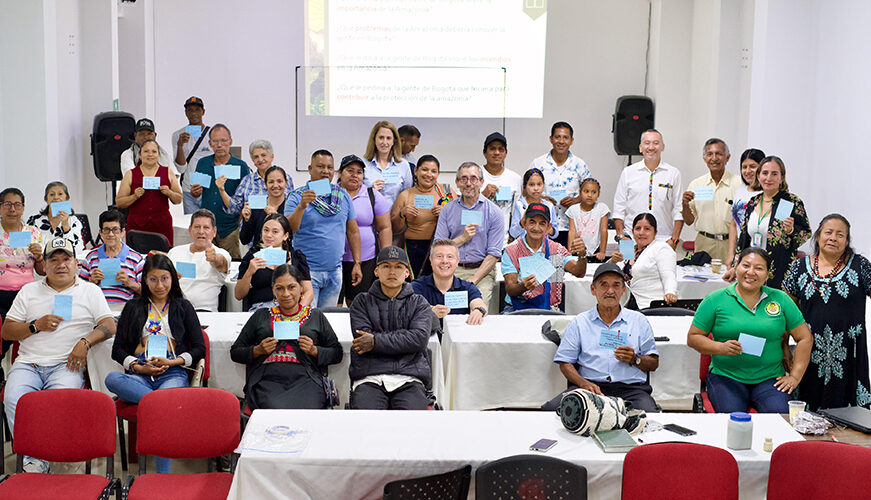 The process of forming Puerto Asís brought together religious, social, indigenous and political leaders from the IRI chapters in this municipality and in the villages of Piñuña Blanco and El Águila.
The process of forming Puerto Asís brought together religious, social, indigenous and political leaders from the IRI chapters in this municipality and in the villages of Piñuña Blanco and El Águila.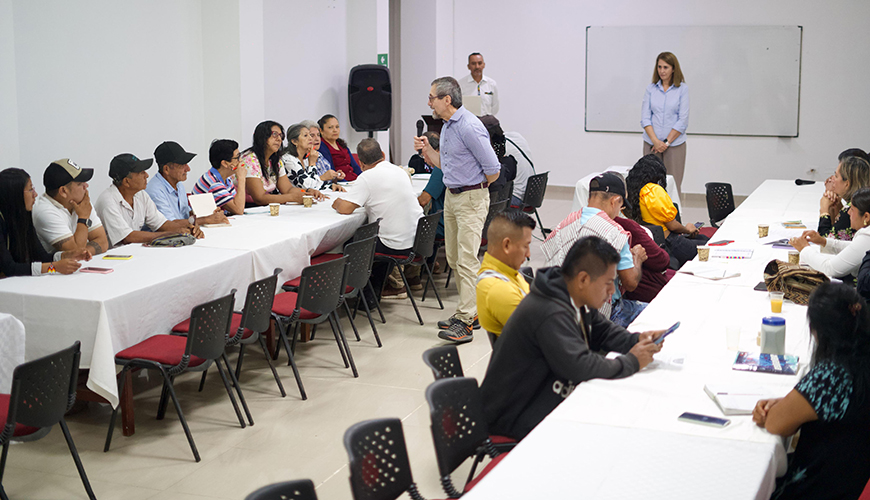 The Heliconia auditorium, of Comfamiliar, hosted the training process in Puerto Asís.
The Heliconia auditorium, of Comfamiliar, hosted the training process in Puerto Asís.
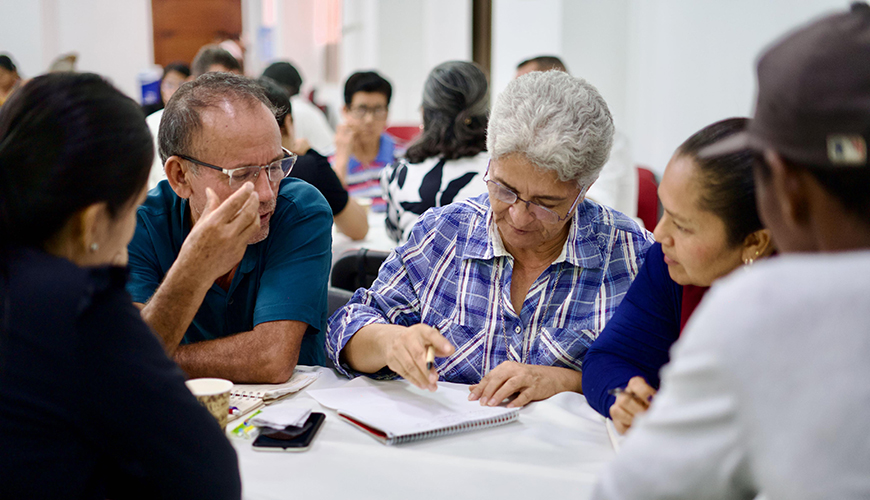 The attendees formulated advocacy processes to solve environmental problems in their territory.
The attendees formulated advocacy processes to solve environmental problems in their territory.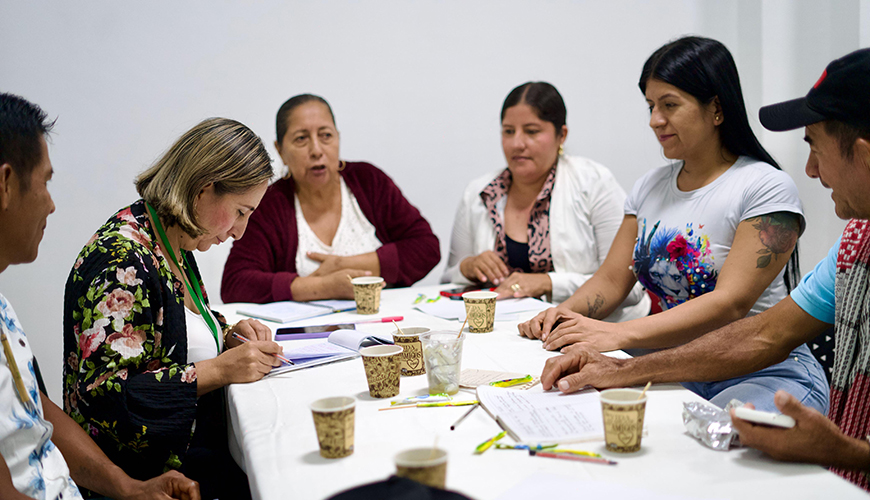 The leaders of Puerto Asís during the advocacy workshop.
The leaders of Puerto Asís during the advocacy workshop.